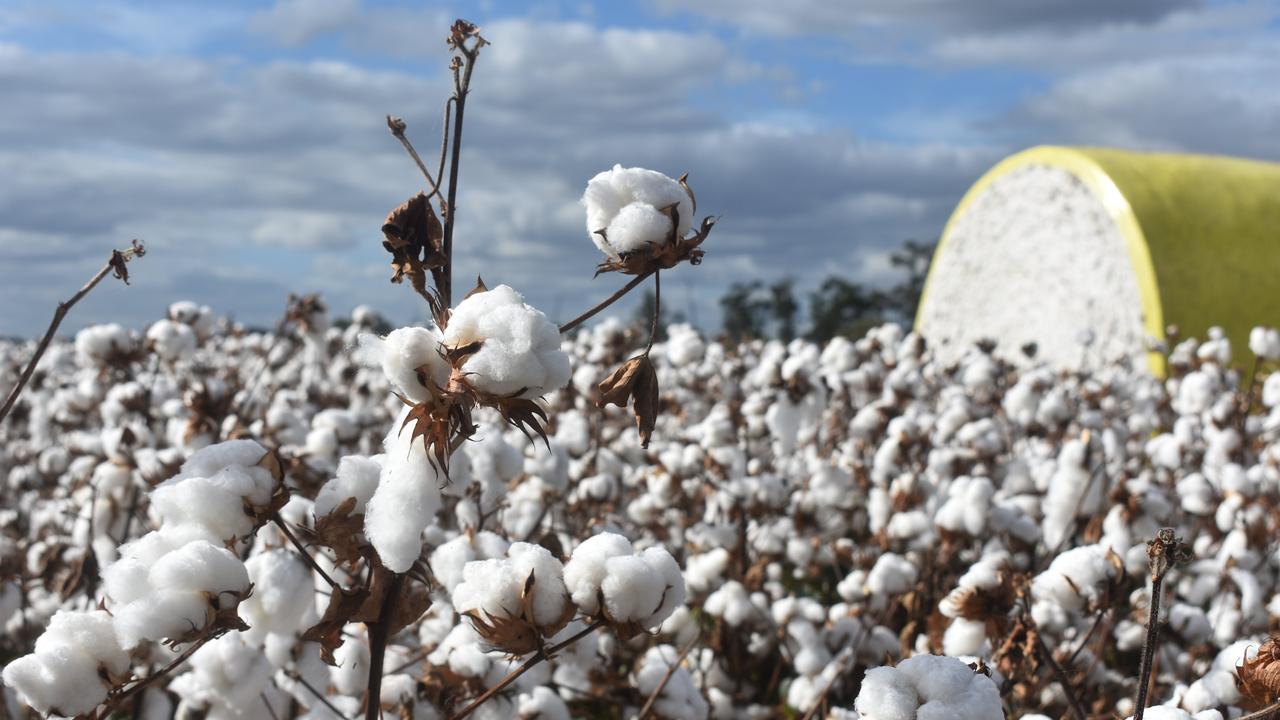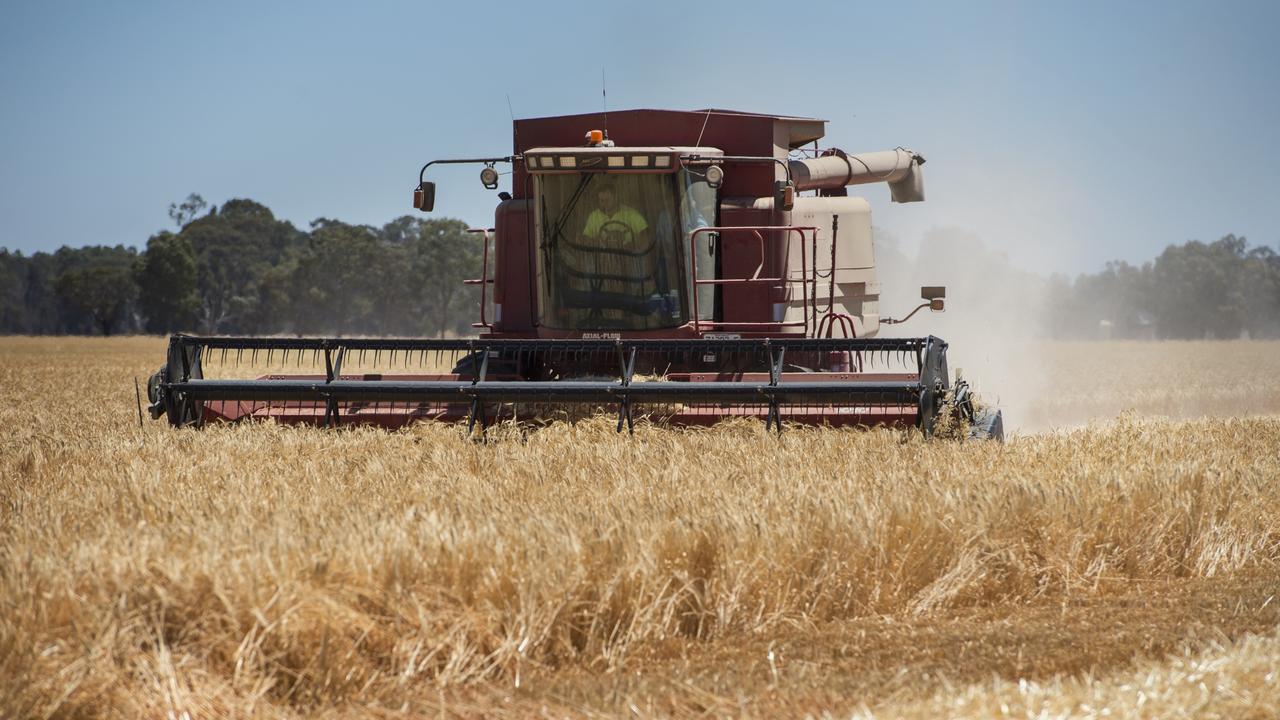Grain grower Stewart Hamilton spreads the risk with properties at Cressy, Wycheproof
Farming in two vastly different cropping environments has led to this Victorian family maximising profit, manpower and machinery.
THERE’s a day’s drive on a tractor between the farms Stewart Hamilton runs in the Western District and the Mallee.
It was that deliberate move not to buy the farm next door that has allowed the Hamilton family to spread seasonal risk and better utilise their investment in machinery.
When they were looking to expand from their Cressy base, a list of pros and cons was drawn up about potential expansion sites and any new farm had to be within a daylight hour’s drive on a tractor or a header from the original farm.
Their search took them to Wycheproof about 15 years ago where Stewart bought land to become part of the family business.
And while there has been some fine tuning in farming in two vastly different cropping environments, they’ve now settled on a regimen that maximises profit, manpower and machinery.
Stewart and his father John crop about 2700ha of country each year, running a similar enterprise mix of cereals, canola and hay across both districts.
Initially, there were four varieties of wheat, three varieties of canola and two varieties of canola grown across the two farms. That, Stewart said, became complicated.
“My dad does the sowing, and he became sick of cleaning out the seeder boxes — the big number of varieties just caused a headache and was time consuming,” Stewart said.
“We also realised that it was possible to grow one variety and manage it accordingly.
“We opted for our northern wheat variety, Scepter, which is a shorter-season variety which suits the Wycheproof farms, but it also can go on in the southern farms due to the cooler climate and greater rainfall.
“It may not have the highest yields, but it is the most adaptable to both climates and even when we get a dry finish, it will still finish.
“And we treat the variety like it needs to be treated depending on where it is sown.”
PERFECT TIMING
THE spread of country allows the variety to be sown on time in both areas (earlier in the Mallee and later in the Western District), something which the Hamiltons found difficult when juggling a range of varieties on each farm.
The same can be said for their barley variety, Planet, which is targeted at the malting market.
While the varieties might be the same, much of the management isn’t, especially in crop management with fertiliser and chemicals.
The crops in the Mallee might be planted with interrow sowing as they are in the south, but from then on, it’s horses for courses.
If the rainfall outlook and subsoil moisture levels at Wycheproof are looking good, inputs such as nitrogen will be maximised. But if the season is looking tough, those inputs such as fertiliser and even chemical application can be pared back to bring down the cost base for the enterprise due to the lower potential income.
Around Cressy, the seasons are much more reliable so Stewart said they “throw as much as we can at the crops” to maximise yields and quality.
“We can stop spending on our crops near Wycheproof if the rainfall outlook is not good, but it is a lower-cost operation regardless,” Stewart said. “We really notice the extra sunlight hours up at our northern farms have lower inputs because there is so much more growth anyway due to the sunnier climate.”
As would be expected, the yields vary widely across the two farming districts. Near Wycheproof, cereal crops produce about four tonnes/ha, canola about 1.8 tonnes/ha and the oaten hay, about 4.5 tonnes/ha.
Move further south, and it’s more like 6.5 tonnes/ha for cereals and an average of 2.5 tonnes/ha for canola but up to three tonnes/ha in some crops.
Oaten hay crops are likely to produce seven to eight tonnes/ha.
HAY DAY
EXPORT hay production was thrown into the mix to spread enterprise mix and to provide a break crop from the wheat-barley-canola rotation yet Stewart can see the irony of the perils of haymaking and the risk involved in a touchy industry.
“We started in making hay for weed management and in the Mallee, we have a couple of export hay companies relatively close by that we can supply,” he said.
“It was to spread our risk rather than be 100 per cent dependent on cropping, but of course there is the weather to contend with.
“We had hay down and got 50mm on it this year but you have to look at the overall picture and see that the 50mm would have a greater impact on our bottom line in terms of more money from our grain than it would from downgrading our hay.”
While the Hamiltons have their fair share of equipment with two headers, seeders, tractors, sprayers, haymaking gear and trucks, they are not afraid to outsource some jobs.
Much of the transport of hay and grain is done by contractors who Stewart said had expertise in their field.
They don’t transport their headers or tractors, preferring to take a day to drive them between the two regions.
The amount of gear they do have allows them to sow, spray and harvest on time, something Stewart said made complete sense.
“We are not dependent on someone to be able to sow on time, or waiting on harvest contractors to arrive,” he said.
OWNER DRIVER
DRIVING their own headers during harvest is an integral part of the management of the farms, where Stewart said he and his father were able to gauge the success of that year’s work and pick up any problems.
“Not only are they really expensive pieces of machinery to put someone else on but driving a header is something that we use to check on our crops and our paddocks,” he said.
“You can get information of course from yield maps, but we like to look at the paddocks and assess what has happened as we harvest.
“It’s things you pick up and notice like why a certain area of the paddock did not yield well, or weed set or other aspects of the crop and it’s the final chance you get to look over the crop for the year that’s just gone.”
While some may lament 2020 as a horror year, Stewart and his family are quietly going about their business of running a farming operation spread across 300km and reaping the rewards of good planning, organisation and risk minimisation. “We are really fortunate we have had a good season in both areas we farm,” Stewart said.
“The silver lining with COVID will be a positive for agriculture in terms of recognising what we as farmers do.
“While everything else seemed to be in trouble, as farmers we have simply gone about our job of producing food for people to eat and hopefully that will reflect on what people of thing of farmers.”
MORE
AUSTRALIAN AGRICULTURE: FARMGATE VALUE TO SKYROCKET IN 2020-21
SHIPPING CAPACITY BECOMING COOLING FACTOR FOR WINTER CROP
NEIGHBOURS STEP IN AFTER HEADER ACCIDENT CLAIMS FARMER’S LIFE


